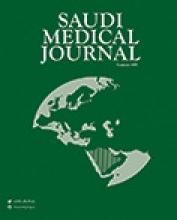Abstract
OBJECTIVE: To evaluate the complications, and to determine maternal and fetal risks in women who undergo 3 or more cesarean sections (CS), compared to those with one or 2 cesarean deliveries.
METHODS: A retrospective analysis of 2276 CS performed between 1 January 2003 and 31 April 2005. We divided patients into 3 groups: Group 1 = with 1 previous CS (n=1183); Group 2 = 2 previous CS (n=781); and Group 3 = >3 previous CS (n=312).
RESULTS: Compared to women with one or 2 cesarean deliveries, women who had >3 CS show significant increase in terms of prolonged operative time, uterine scar dehiscence, uterine rupture, placenta previa, placental adherence, and mild adhesion formation. We found no significant differences between the 3 study groups in terms of injury to surrounding structures, need for blood transfusion, anesthesia complications, hematoma formation, thromboembolism, and incisional hernia. Apgar score >7 at one and 5 minutes, neonatal intensive care unit, multiple pregnancy rate, premature delivery rate and perinatal death rate, all were similar in the 3 groups.
CONCLUSION: Women with multiple CS (>3) are significantly prone to have uterine scar rupture and abnormal placentation in the subsequent pregnancies compared to those with one or 2 previous cesarean deliveries. Despite that, maternal and neonatal outcome did differ from patients with lower-order cesarean sections.
- Copyright: © Saudi Medical Journal
This is an open-access article distributed under the terms of the Creative Commons Attribution-Noncommercial-Share Alike 3.0 Unported, which permits unrestricted use, distribution, and reproduction in any medium, provided the original work is properly cited.






